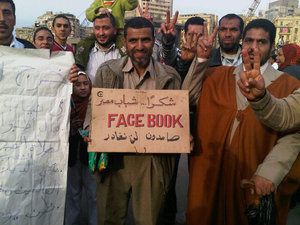Egypt's Facebook Revolutionaries Fractured
A 30-minute walk from Tahrir Square, in a dark, dilapidated room lighted by a single, bare bulb, members of the April 6 movement are meeting to decide the group’s future.
What began as a subdued discussion has become a bitter debate.
“Who are we?” one member demands. “A resistance group? Civil rights organization? Lobbying and pressure group?”
“Should we even exist anymore?” another asks. “We accomplished our mission. Mubarak is gone.”
The group’s identity crisis has been spurred in recent weeks by rapid growth — from a fledgling Facebook page created to support workers who were planning a strike on April 6, 2008, into an organization that played a central role in Egypt’s revolution. It now claims more than 20,000 members and roughly 200,000 followers on Facebook.
Most are educated professionals in their 20s and 30s. They have experience in opposing government but little in reforming and working with it. And the divisions emerging in the group and others have been deepened by the fractured, everyone-gets-a-voice nature of the Internet, which once united the protest movement.
When one member suggests that the group become a political party, the meeting turns into a full-fledged shouting match. Politics — with its accompanying machinations of power, self-interest and corruption — are what pushed Egypt into a three-decade authoritarian regime, one member says. Why not focus on activism instead of wasting time on a political party?
It was, in many ways, so much easier during the revolution.
For those heady 18 days, Egypt’s young activists shared one vision and focused all of their efforts — tweets, Facebook posts, videos and blogs, as well as fists and stones — toward that goal: taking down Hosni Mubarak, the autocrat who had ruled Egypt for 30 years.
But now, with that goal accomplished, other targets have sprung up. There are, as some activists put it, as many goals and visions as there are Twitter accounts.
Click here to read more.


